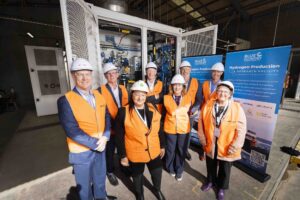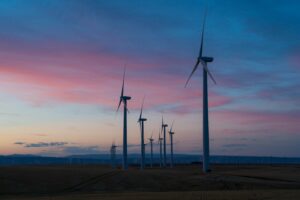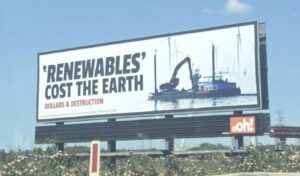Greenfield wind and solar developments are about to take off as engineering, procurement and construction (EPC) costs soften and offtake prices edge upwards, says the CEO of the rebranded Pacific Hydro.
Pacific Blue chief Domenic Capomolla says energy offtake prices are edging back up to the $70-80 per megawatt (MW) they need to be for wind, and above $60/MW for solar, which should begin derisking a number of projects in proposal stages.
At their nadir, wind and solar bids dipped into the $30-$40/MW range, but that range couldn’t support the build out of the volume of renewables required to replace fossil fuel-firmed power.
“The real cost comes in firming. For 1MW of fossil fuel generation to be replaced we need 4-5 MW of renewables. It’s expensive,” Capomolla told RenewEconomy.
In 2014, PacHydro was forced to pull out of a consortium to build the 56MW Moree solar farm, partly due to super low wholesale electricity prices.
Furthermore he is seeing local EPC costs softening, as loosening supply chains are translating into lower prices, particularly for high-demand products such as wind turbines.
But despite the favourable climate for renewable energy at a state and federal level, governments need to do more to grease the industry’s wheels, particularly when it comes to the shortage of suitable greenfields development sites, he says.
“The reality is that the targets set by the federal government are quite ambitious. The states individually, Victoria, New South Wales (NSW) and Queensland are supporting those very ambitious targets. It’s their job to start to break down or lubricate any of these friction points such as bureaucracy and allowing us to find the right land in the right spots.”
New-look Pacific Blue to emphasise renewables-only
Capomolla is on a media tour to spruik the new-look Pacific Hydro, which has rebranded into Pacific Blue to better articulate its history as a developer solely of renewables.
The company began as a hydro developer, but today of its 665MW of generation only 40MW is water-based. Some 500MW is wind, generated in Victoria and South Australia, and some 100MW is solar, made in Queensland, and it has a low-cost retail brand in Tango Energy which has about 100,000 customers, according to 2021-22 figures.
Capomolla says the company has 2.5 gigawatts (GW) of solar, battery, hydro and wind projects in its pipeline, and plans to launch a higher priced carbon neutral electricity and gas retailer under the Pacific Blue brand.
In 2016, it was bought out by China’s State Power Investment Corporation for $3 billion from IFM Investors and AustralianSuper — a high price but one that still meant IFM had to take a $685 million hit on its balance sheet.
The sale came a year after then-Pacific Hydro was forced to fire a quarter of its staff and put all developments on hold to stay afloat, as a negative policy environment, extremely low wholesale power prices, and internal financial problems forced it into a major restructure.
Capomolla says the new owner opened doors in terms of financing.
In February the company reportedly refinanced a $1.6 billion loan with a three-year $1.5 billion package from a rota of existing bankers including Bank of China and China Construction Bank, China’s Bank of Communications, China Merchants Bank and Industrial and Commercial Bank of China.
Onshore solar, wind, energy storage only
In terms of developments, Pacific Blue is sticking to its knitting.
“We only do greenfield. Everything we’ve built is from the ground up. Because we are traditionally a builder owner operator, we own every single power plant we’ve built,” Capomolla says.
It is big in wind around Warnambool, Victoria, and solar south of Townsville in Queensland where it also has approval to build another 300 MW of solar and install 150 MW of battery power, and 500-600 MW of wind in the early stages of planning.
It is not mounting proposals for any NSW renewable energy zones or offshore wind, because it has no experience in those geographic or technical areas, Capomolla says.
Under development are the 60 MW / 120 MWh Clements Gap battery to support the pseudonymous wind farm in South Australia, the 100 MW Daroobalgie solar farm near Forbes in NSW, the 240 MW Prairie solar farm in Victoria, and a 300 MW expansion of the Haughton solar farm in Queensland along with a big battery.










